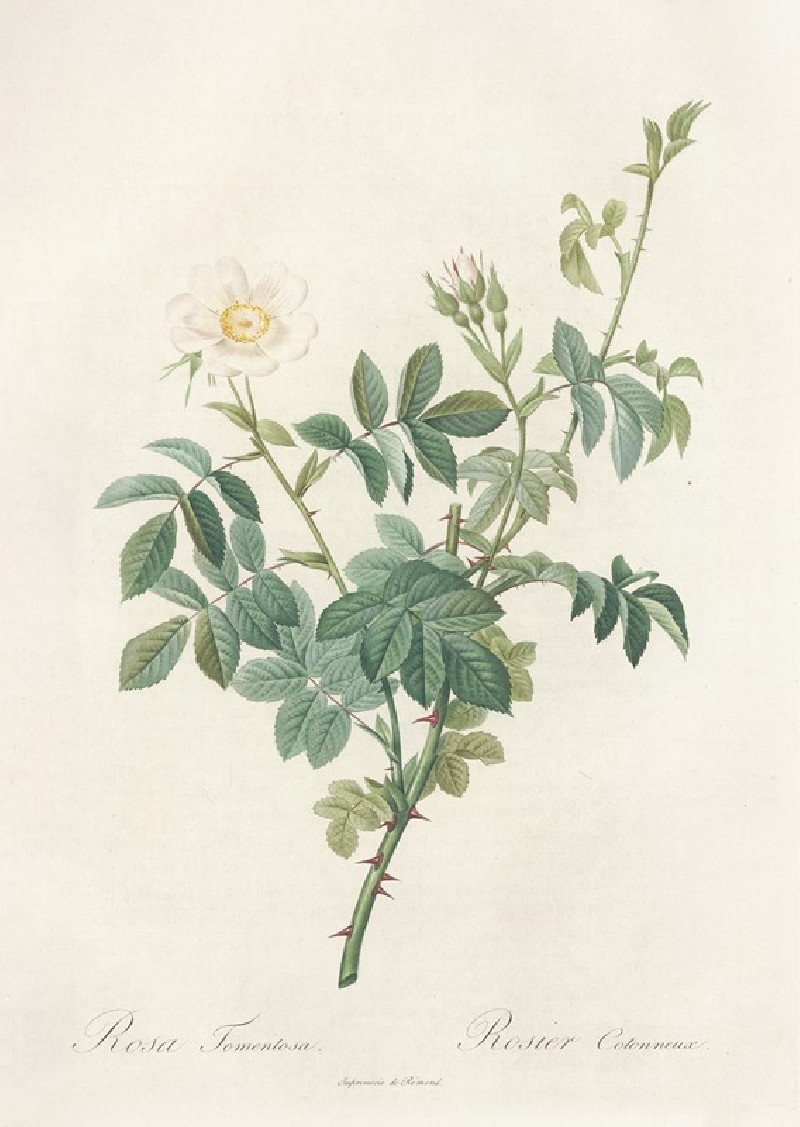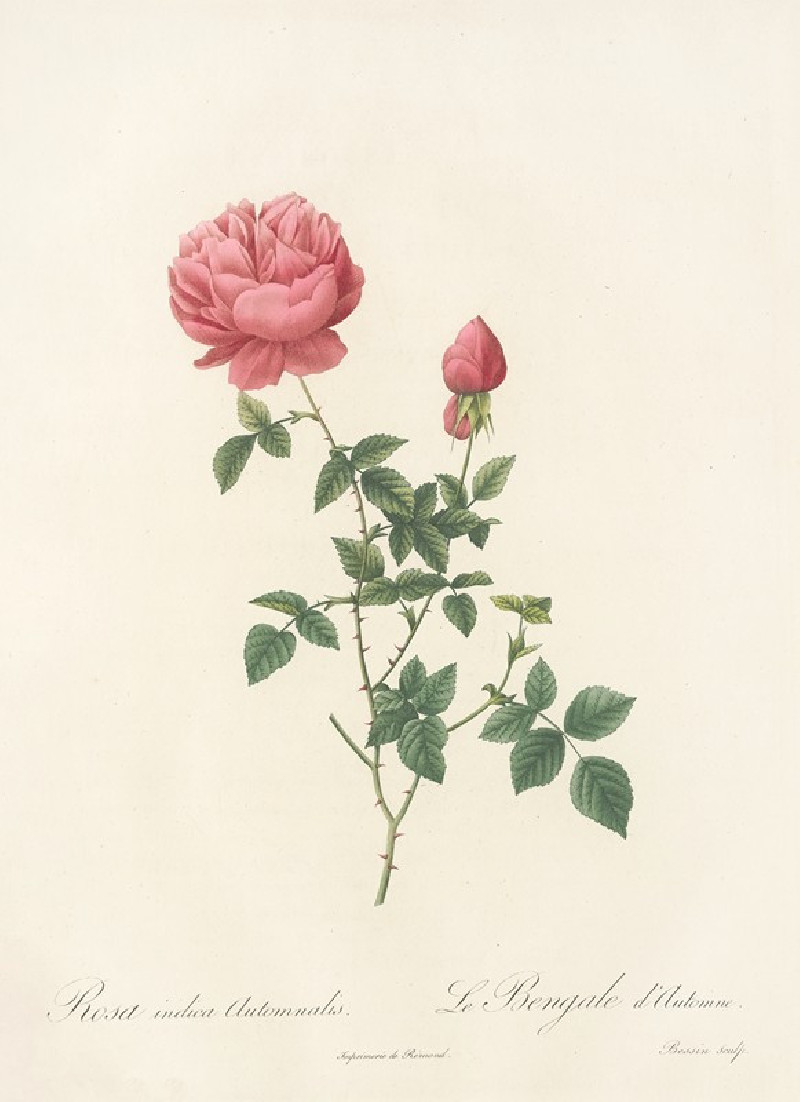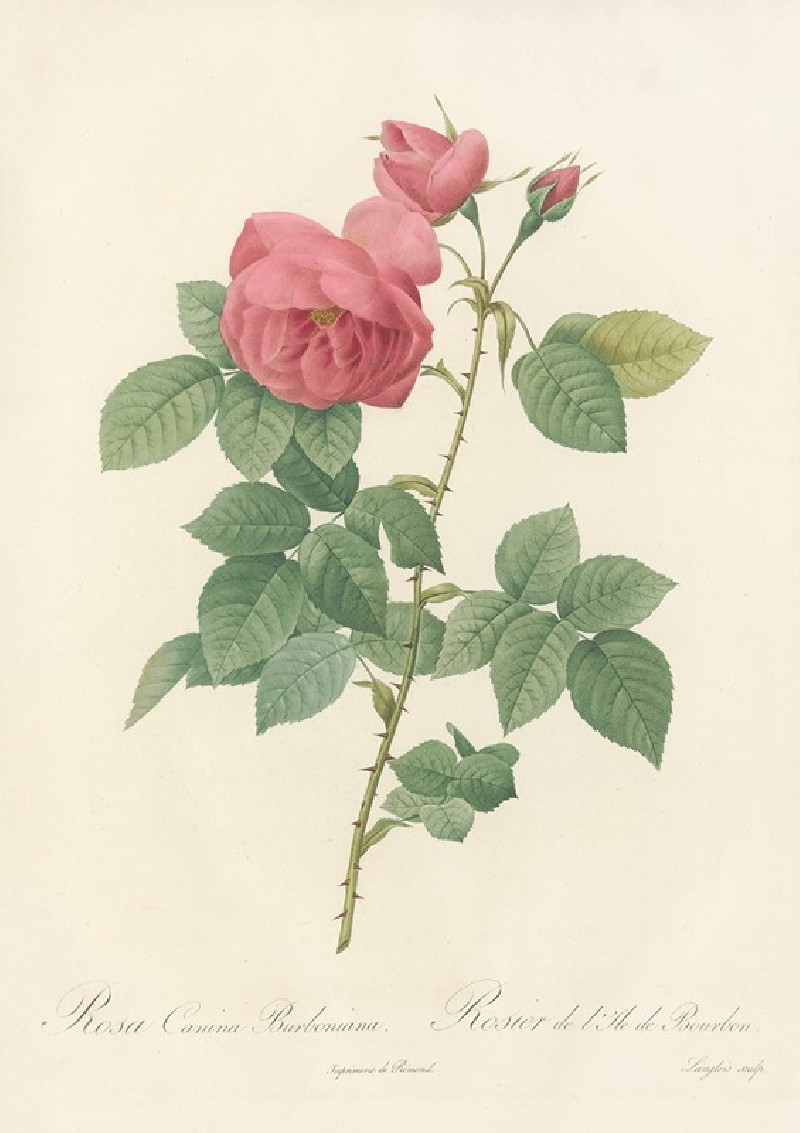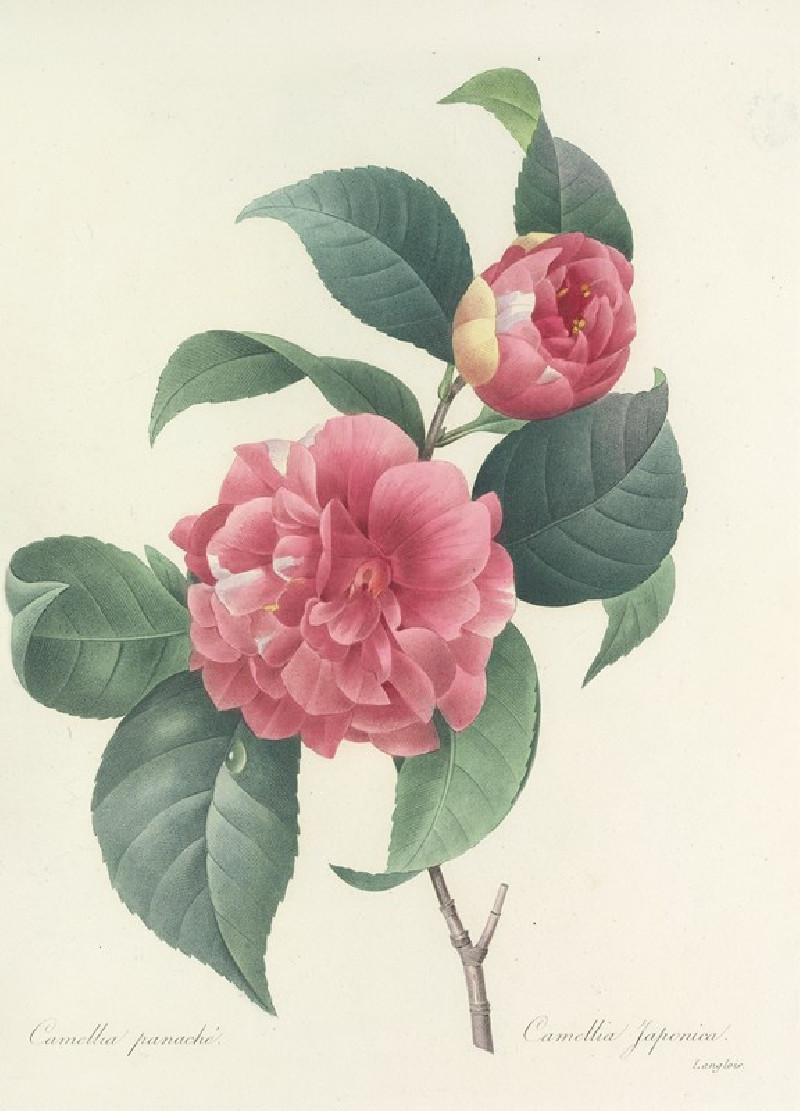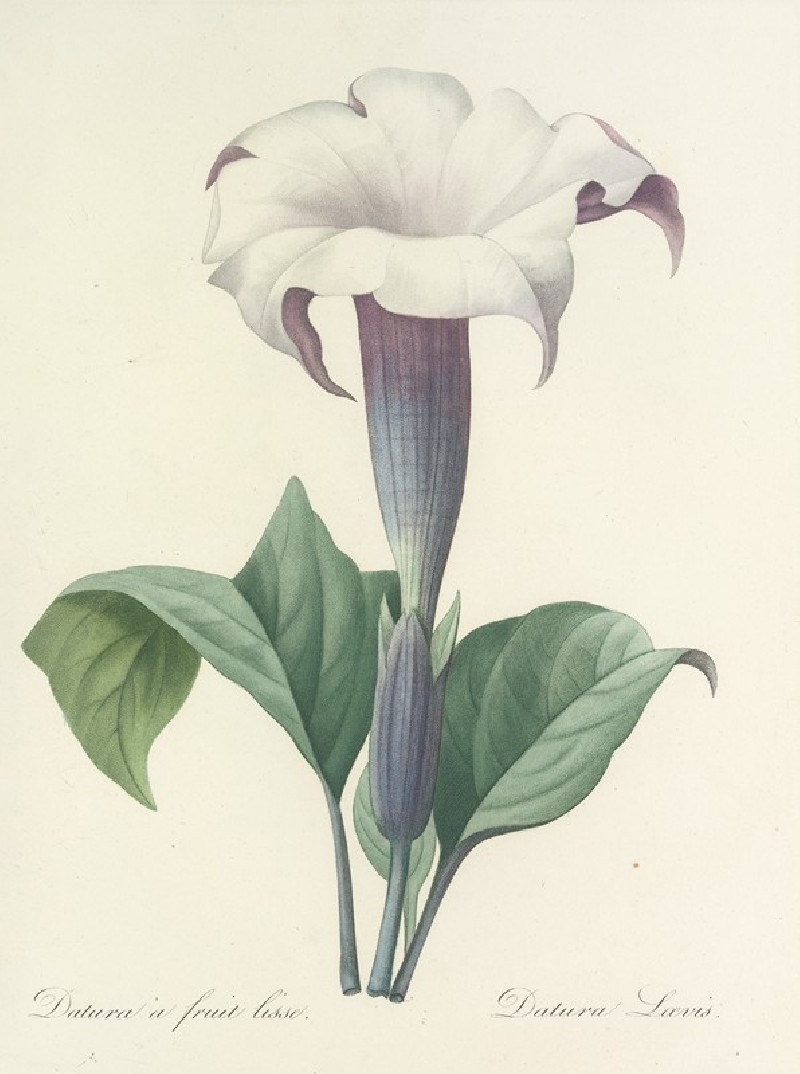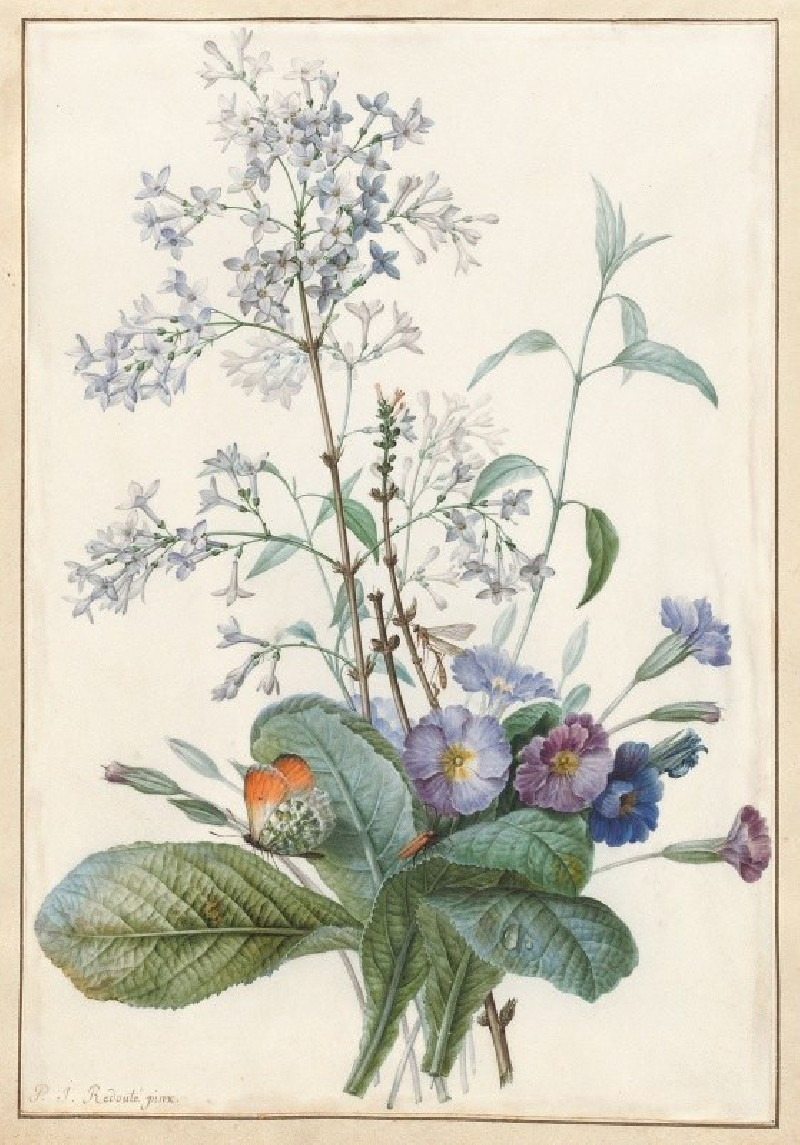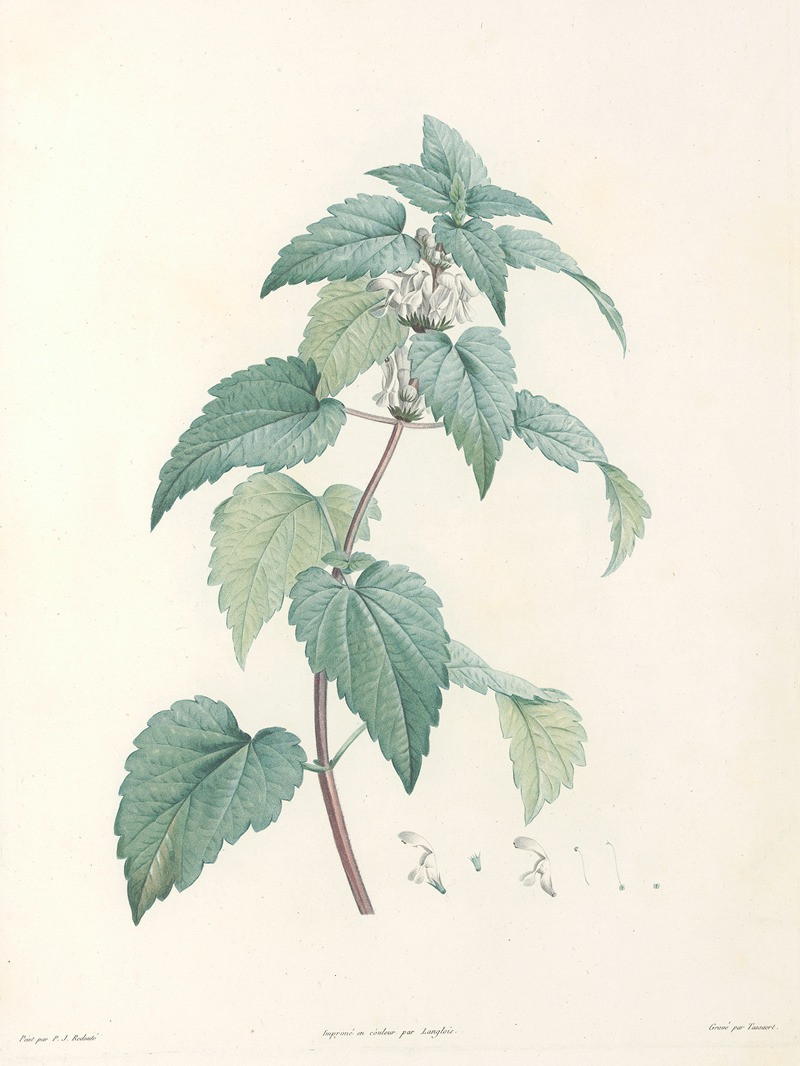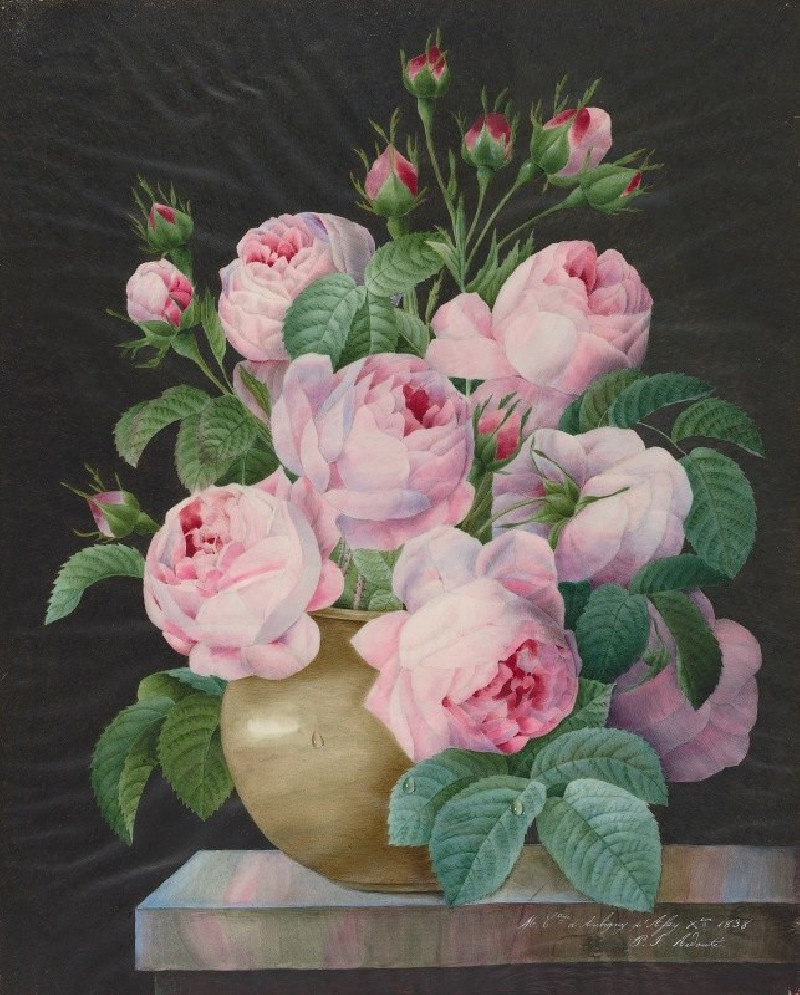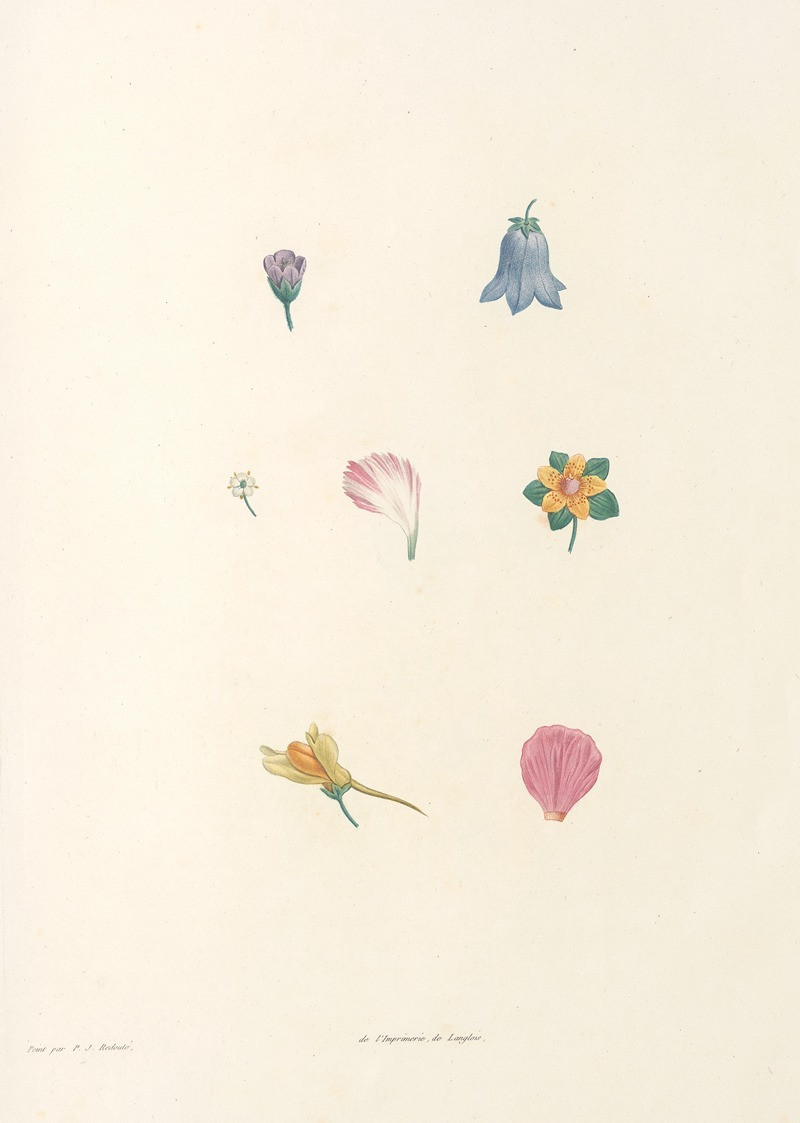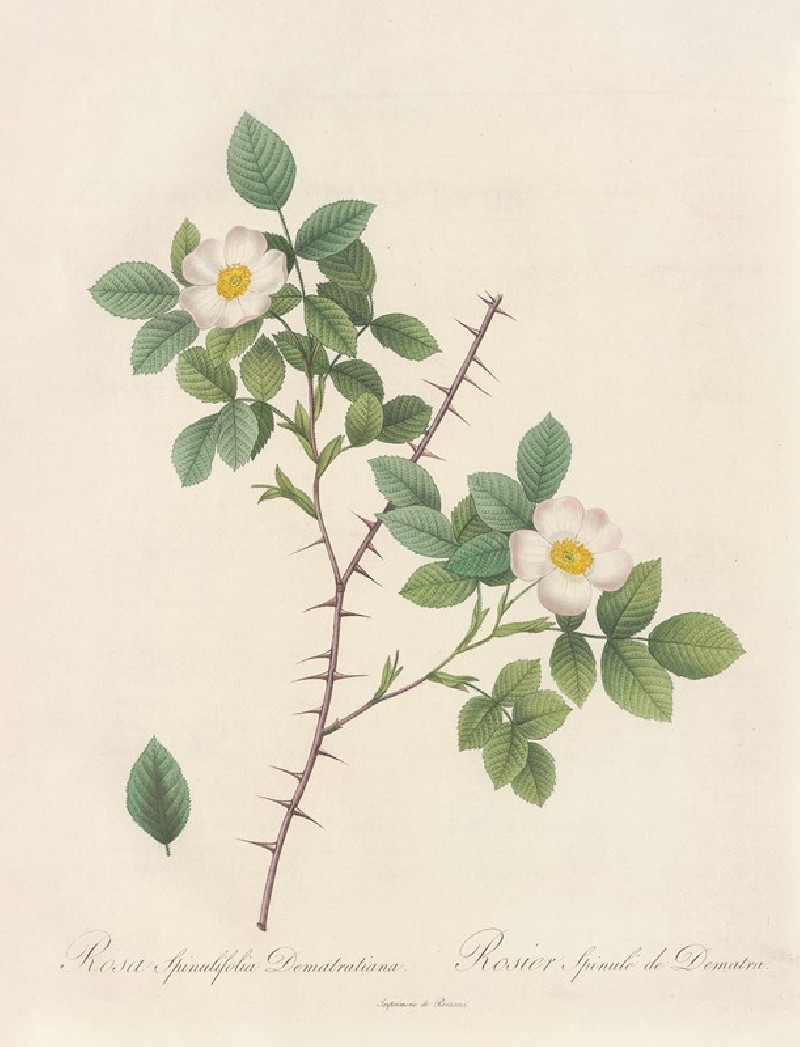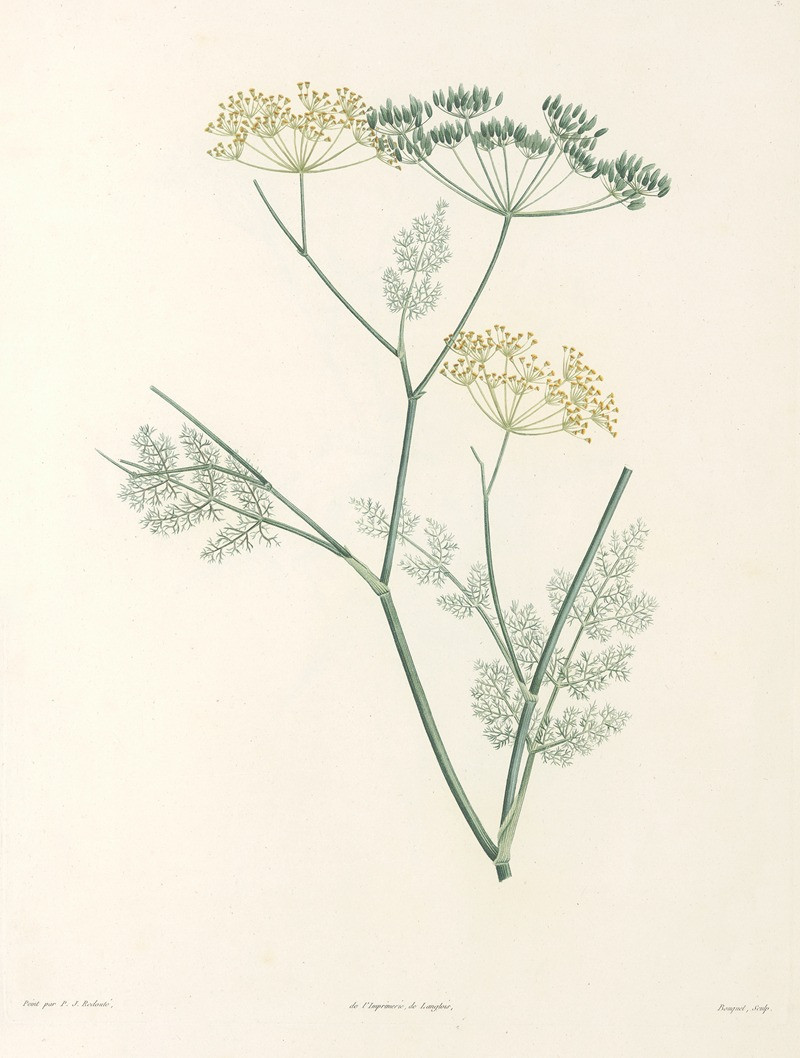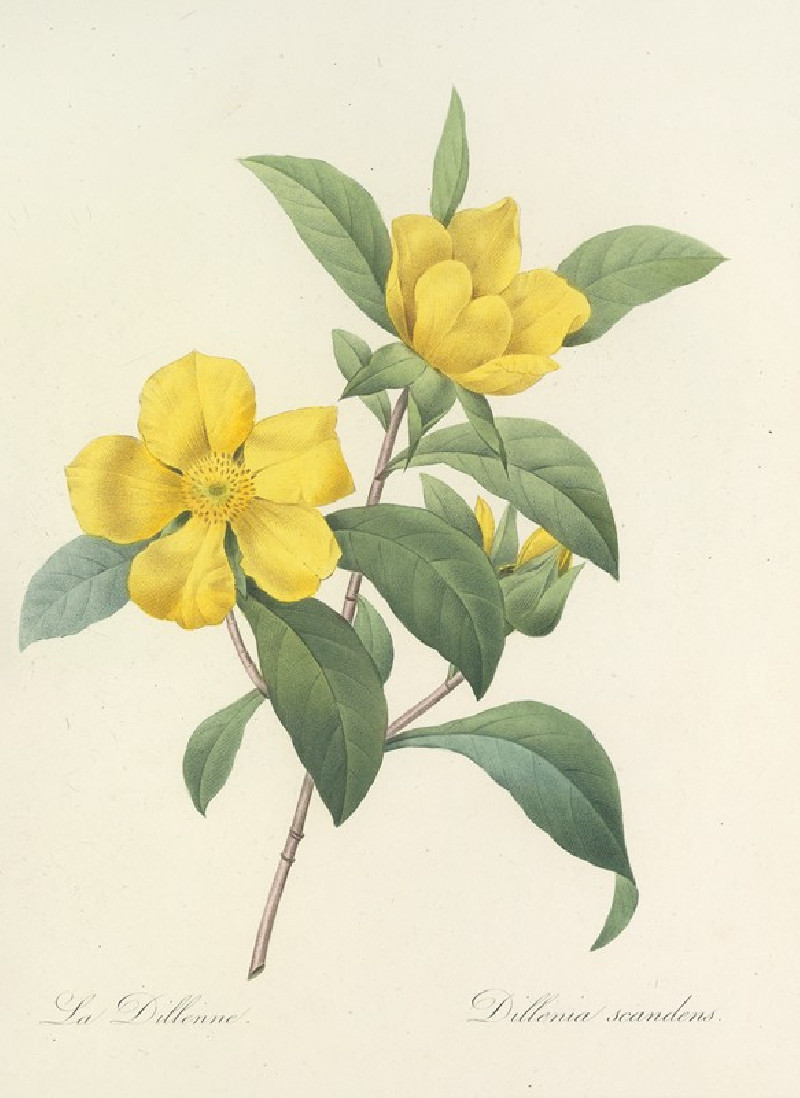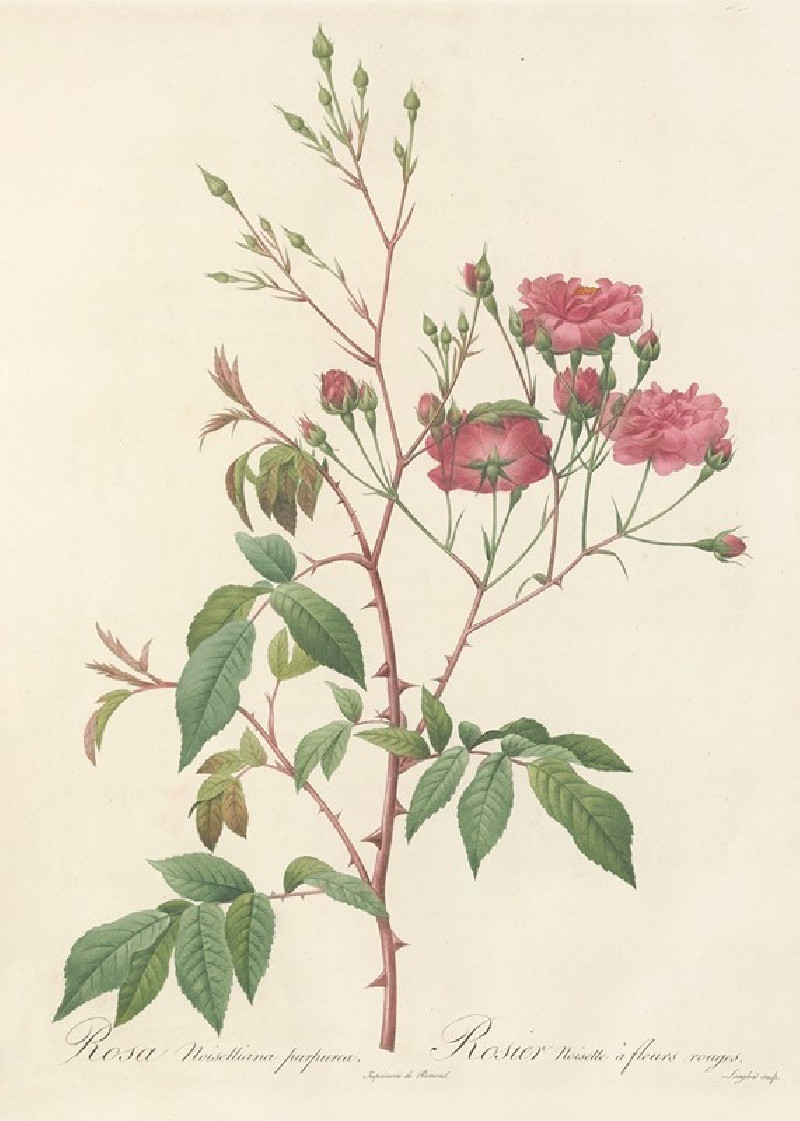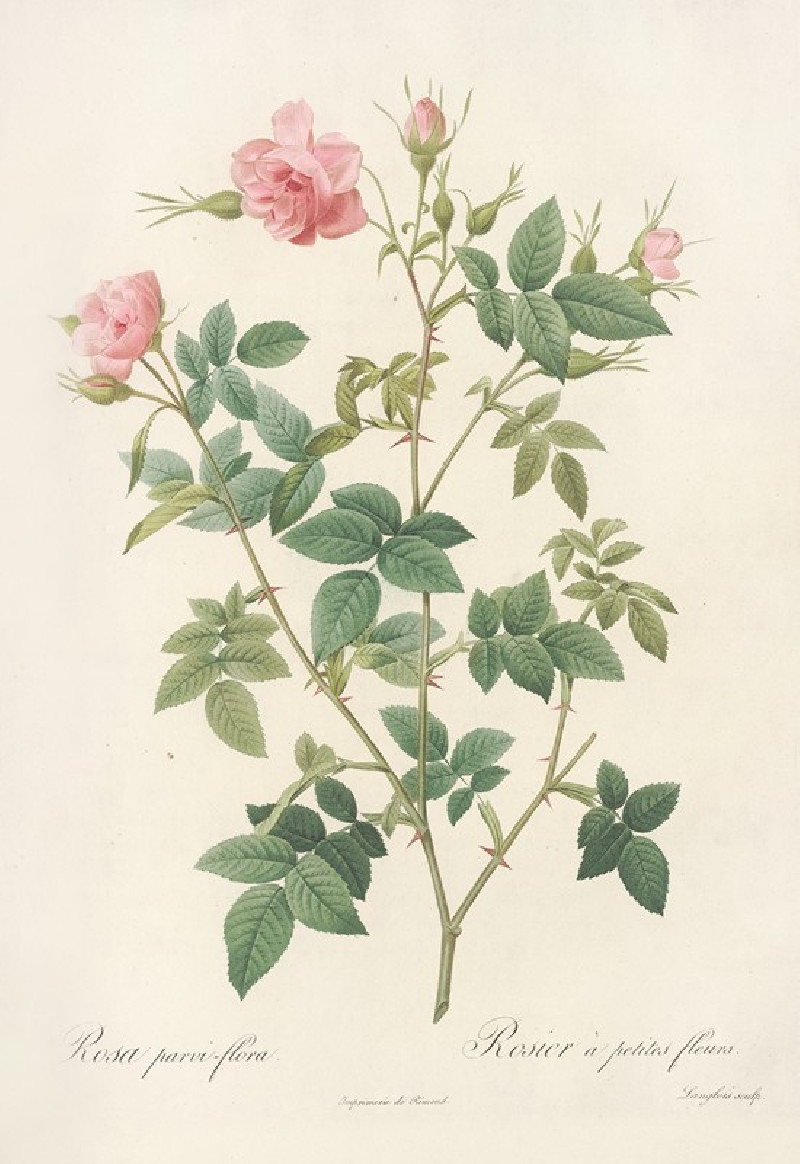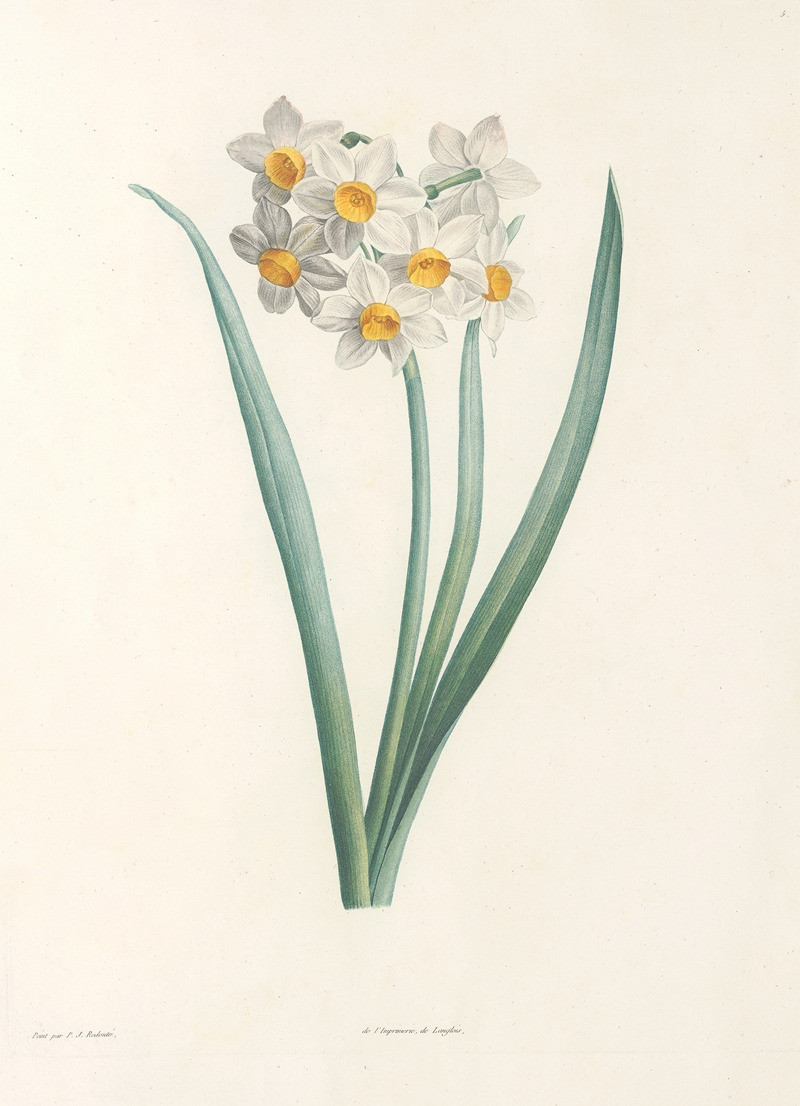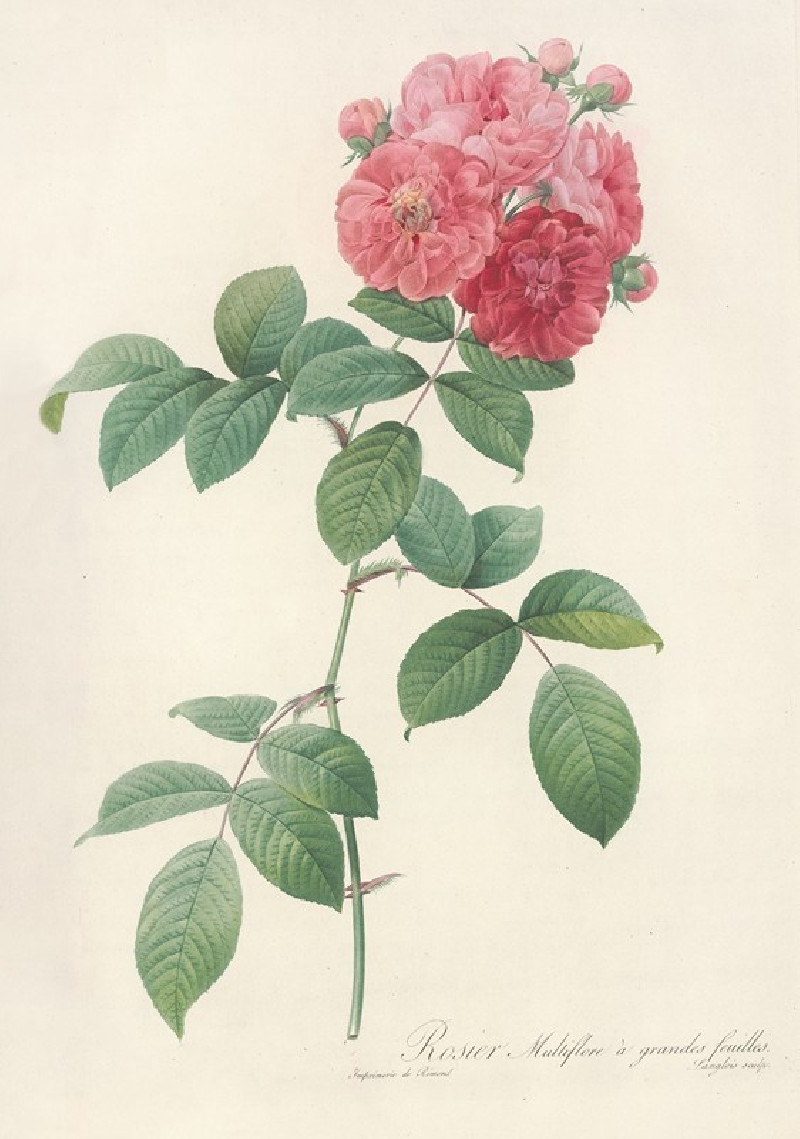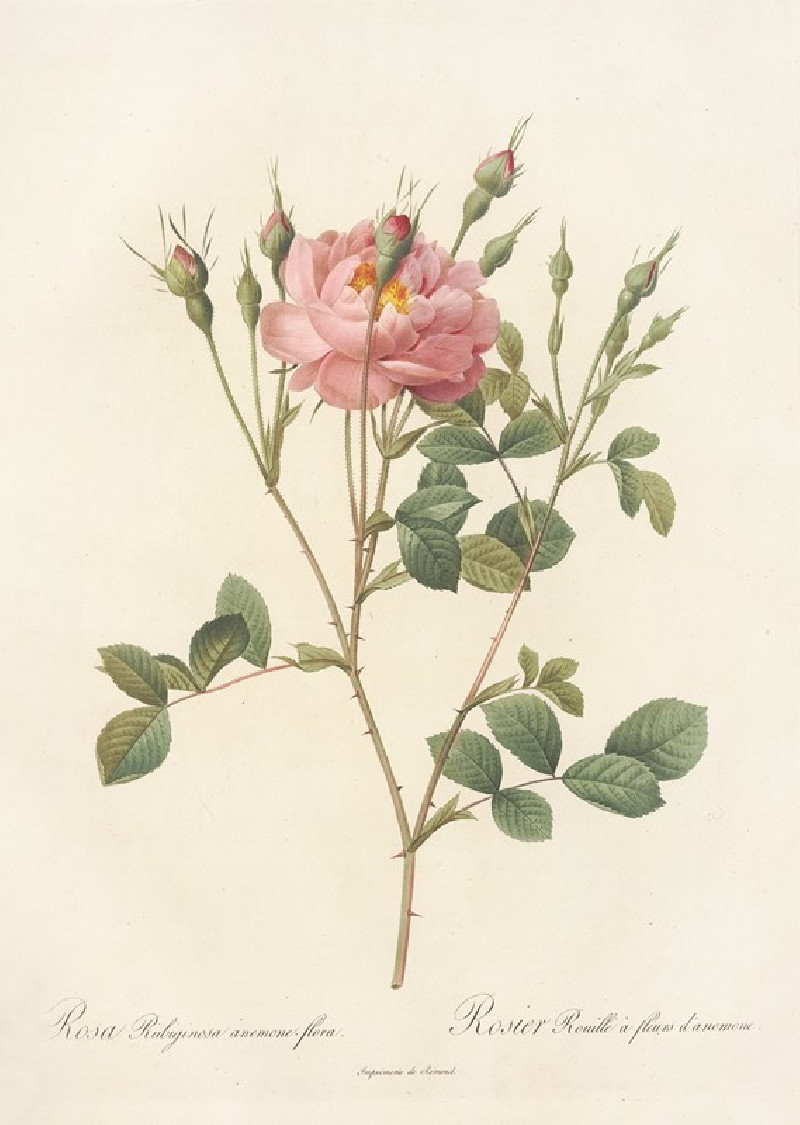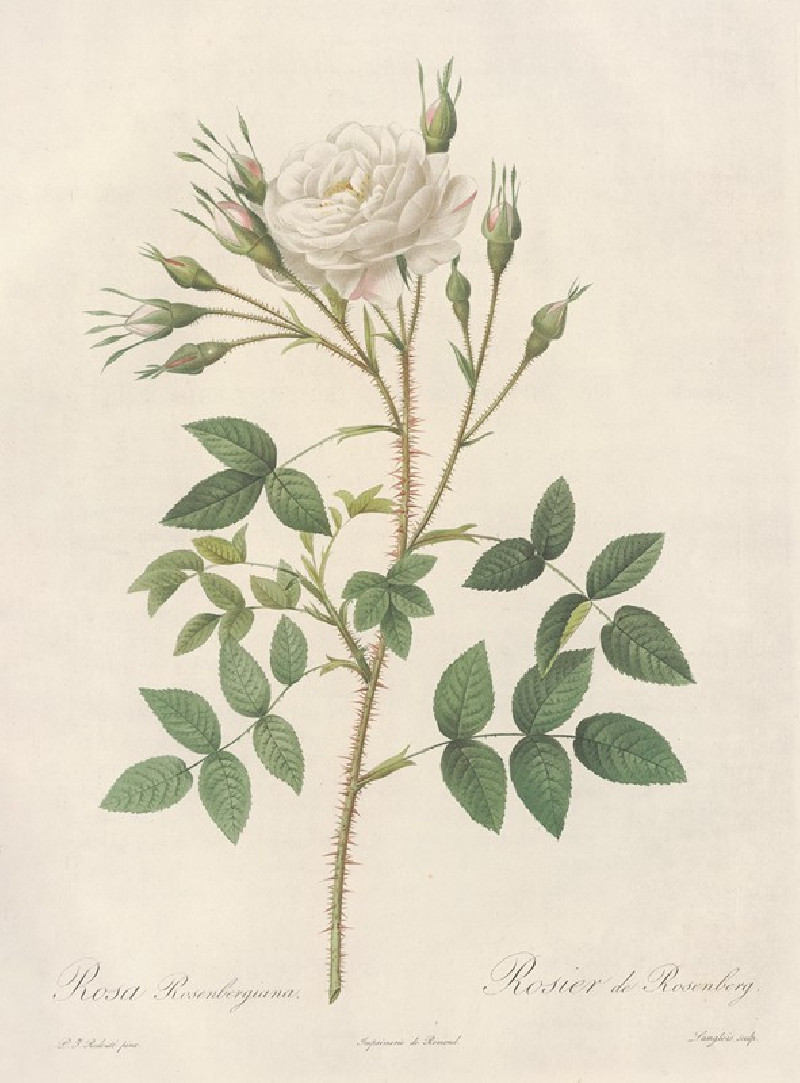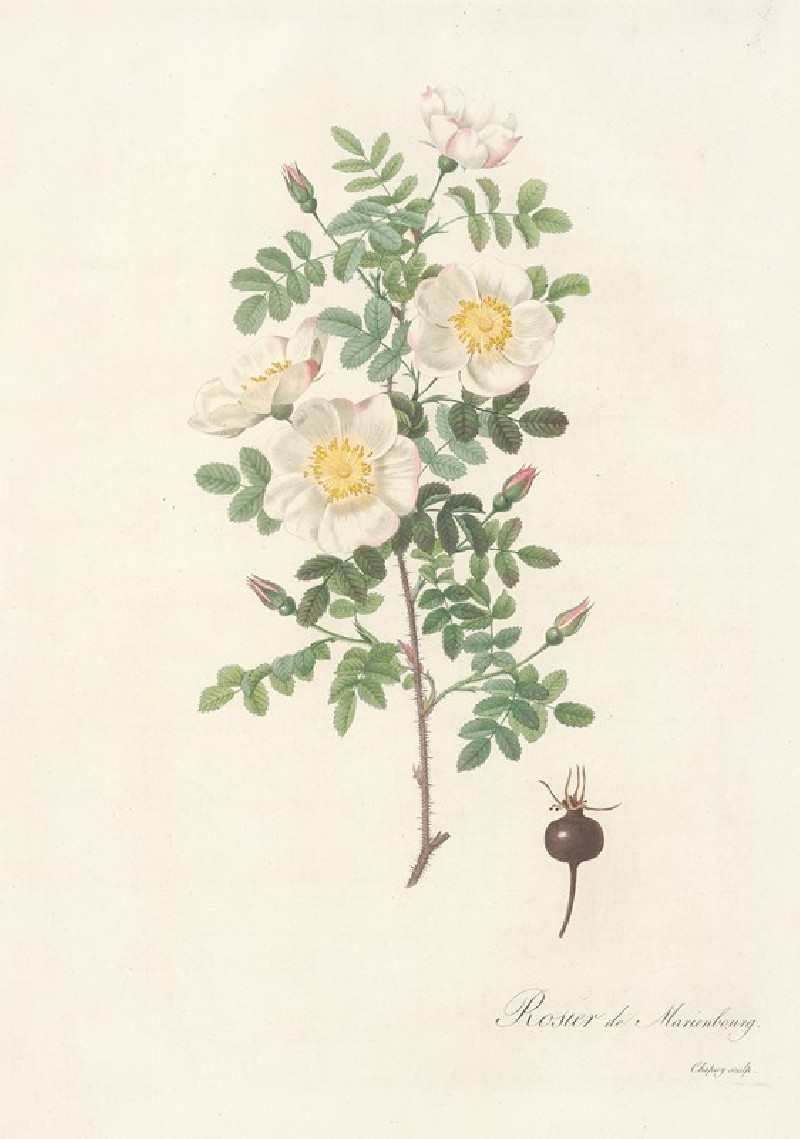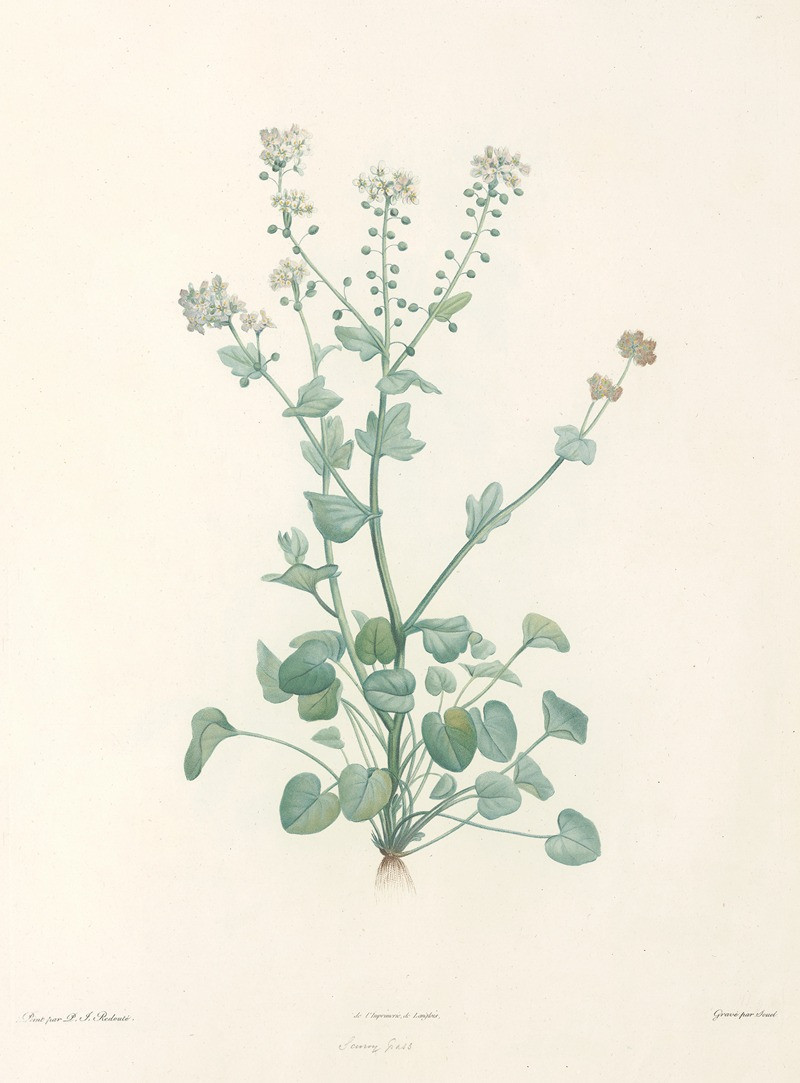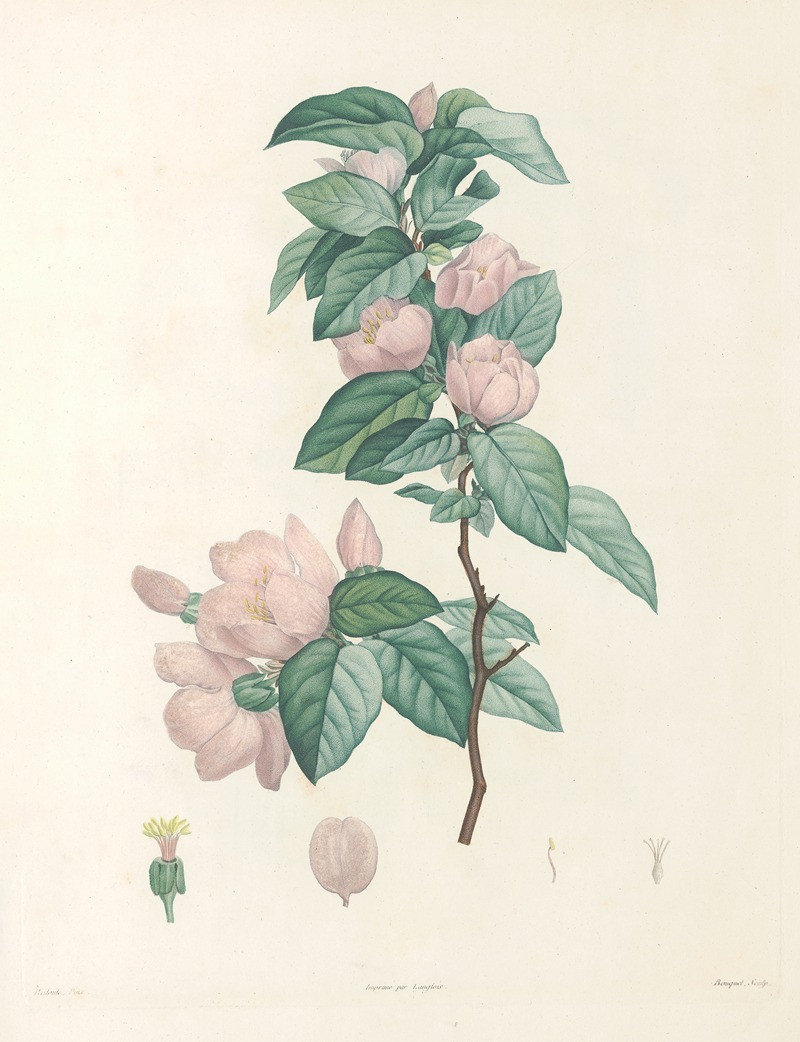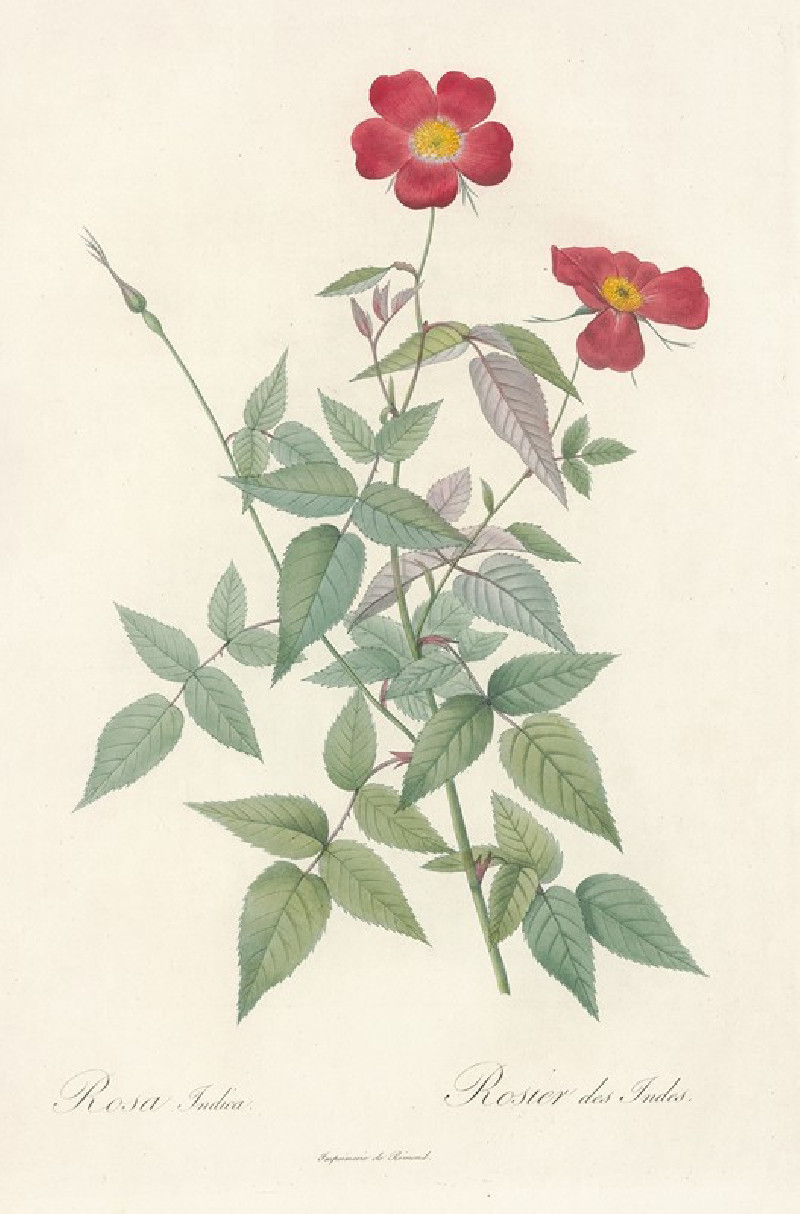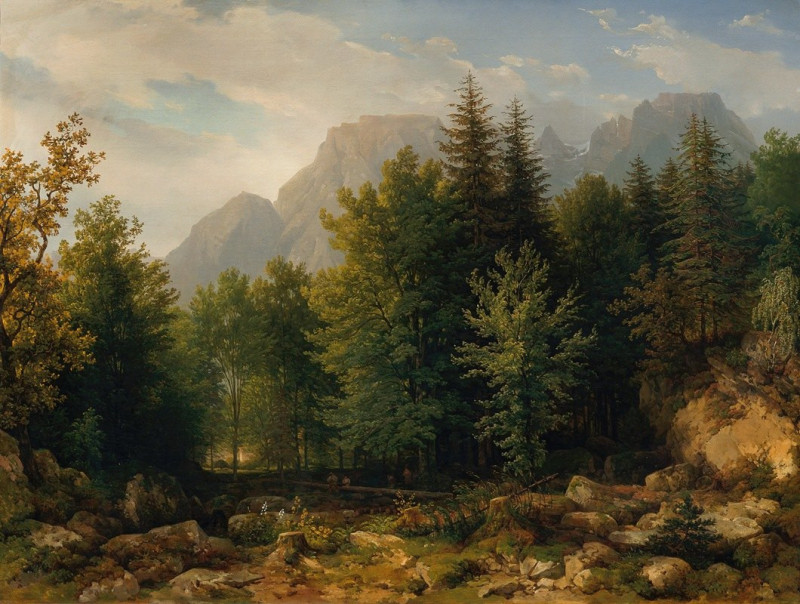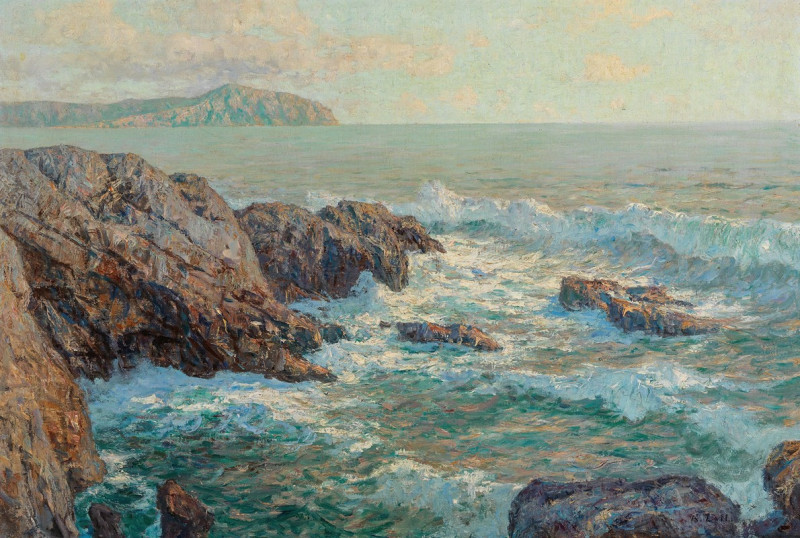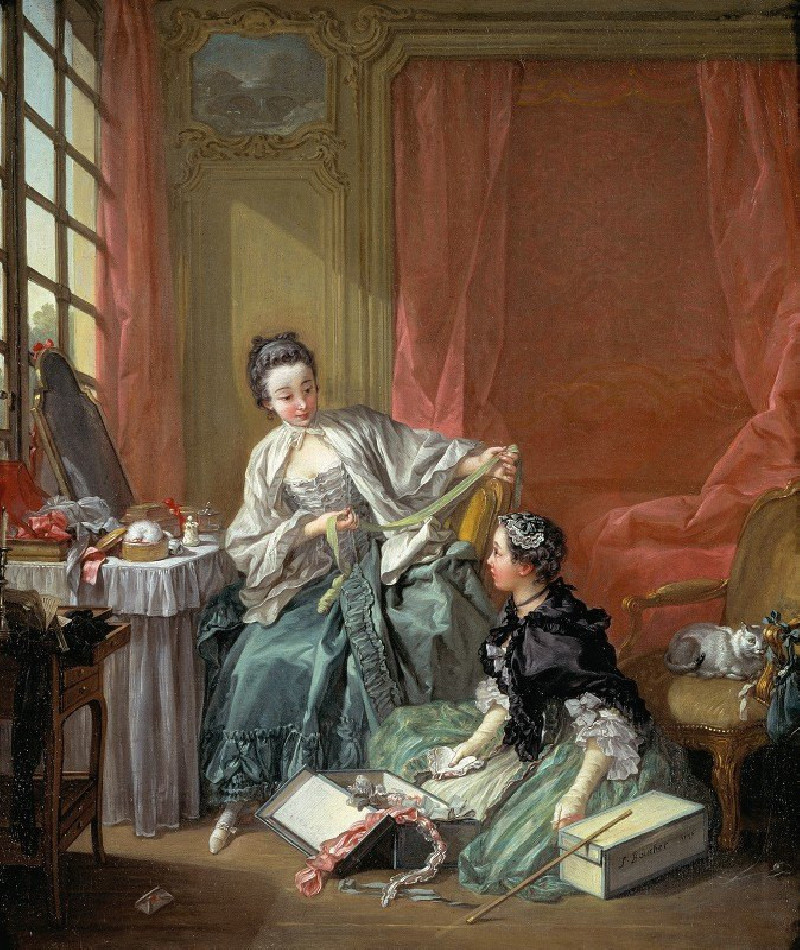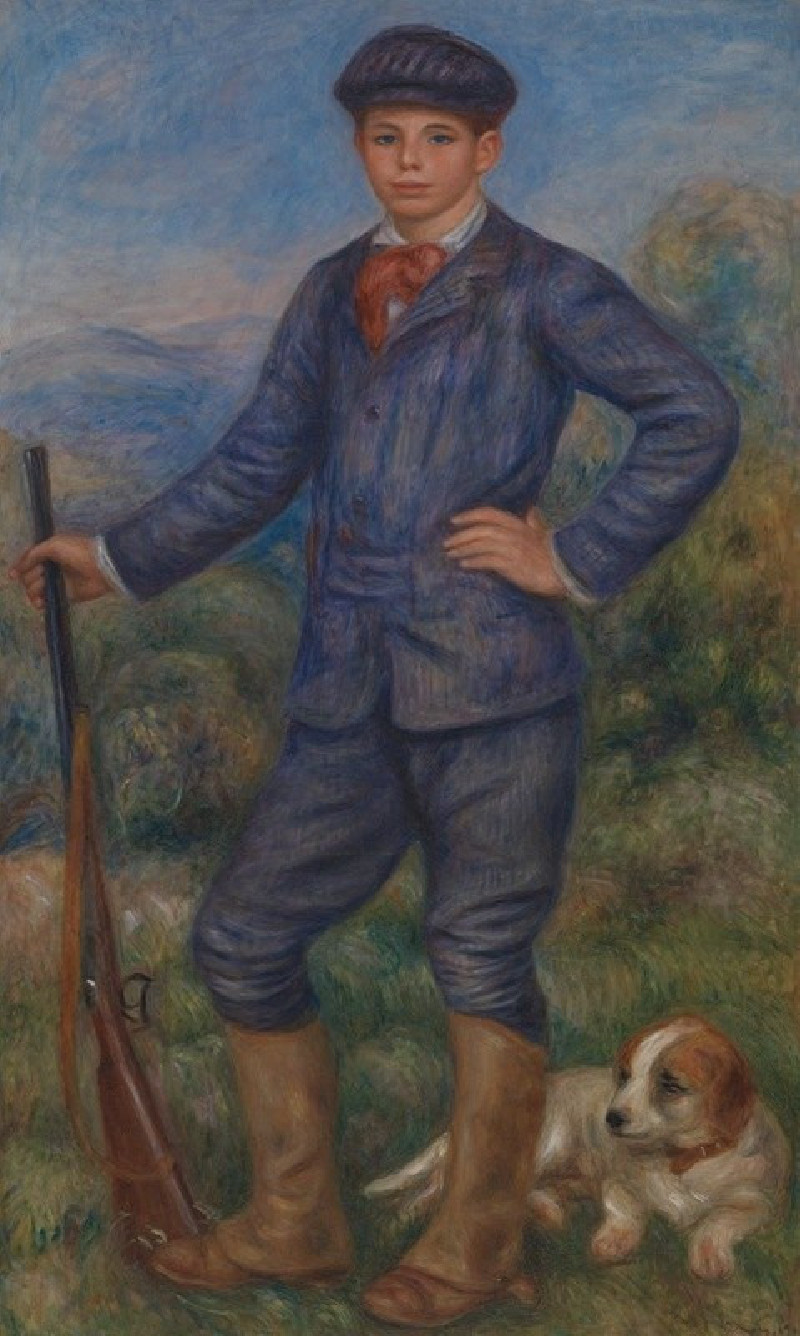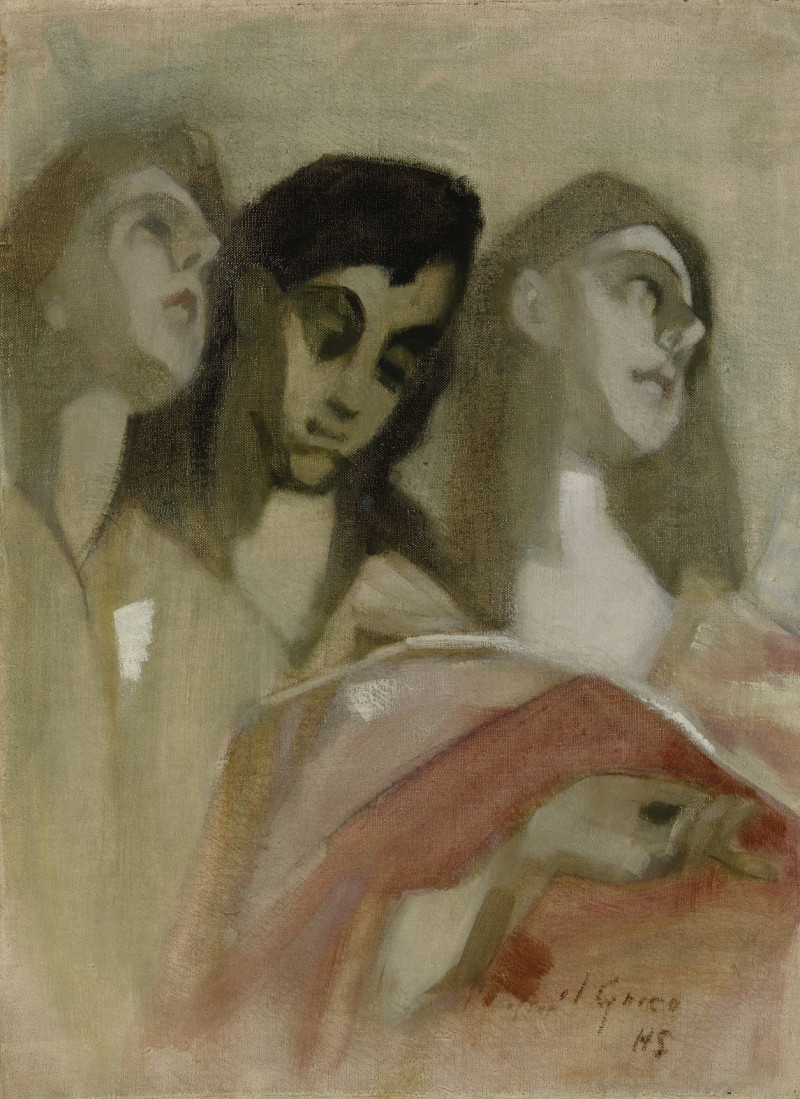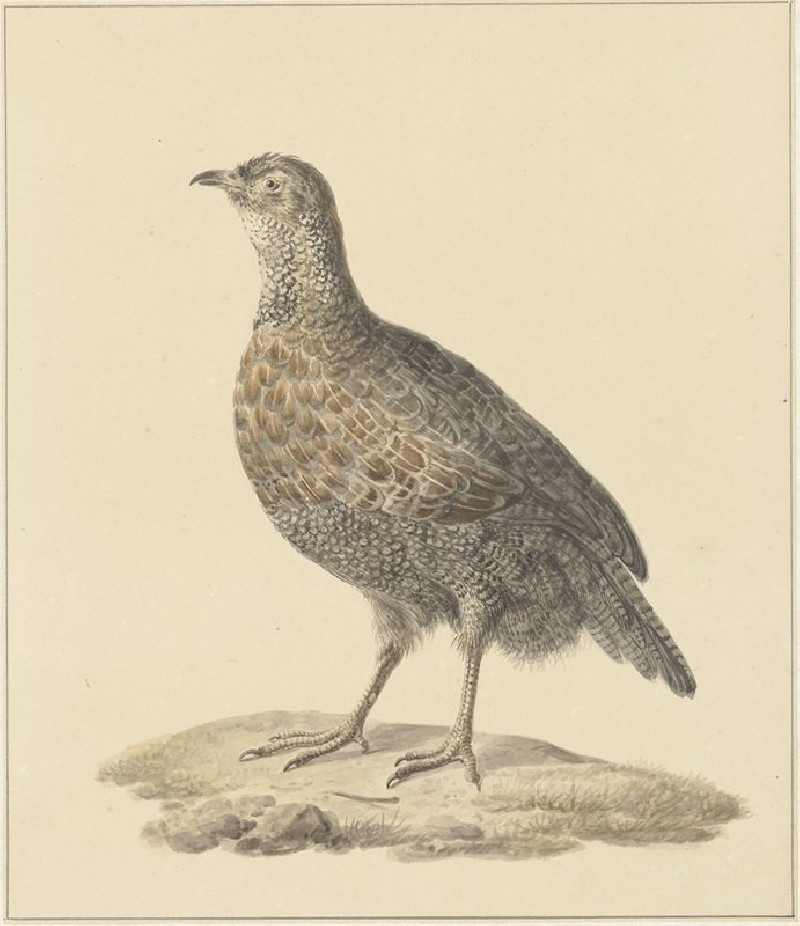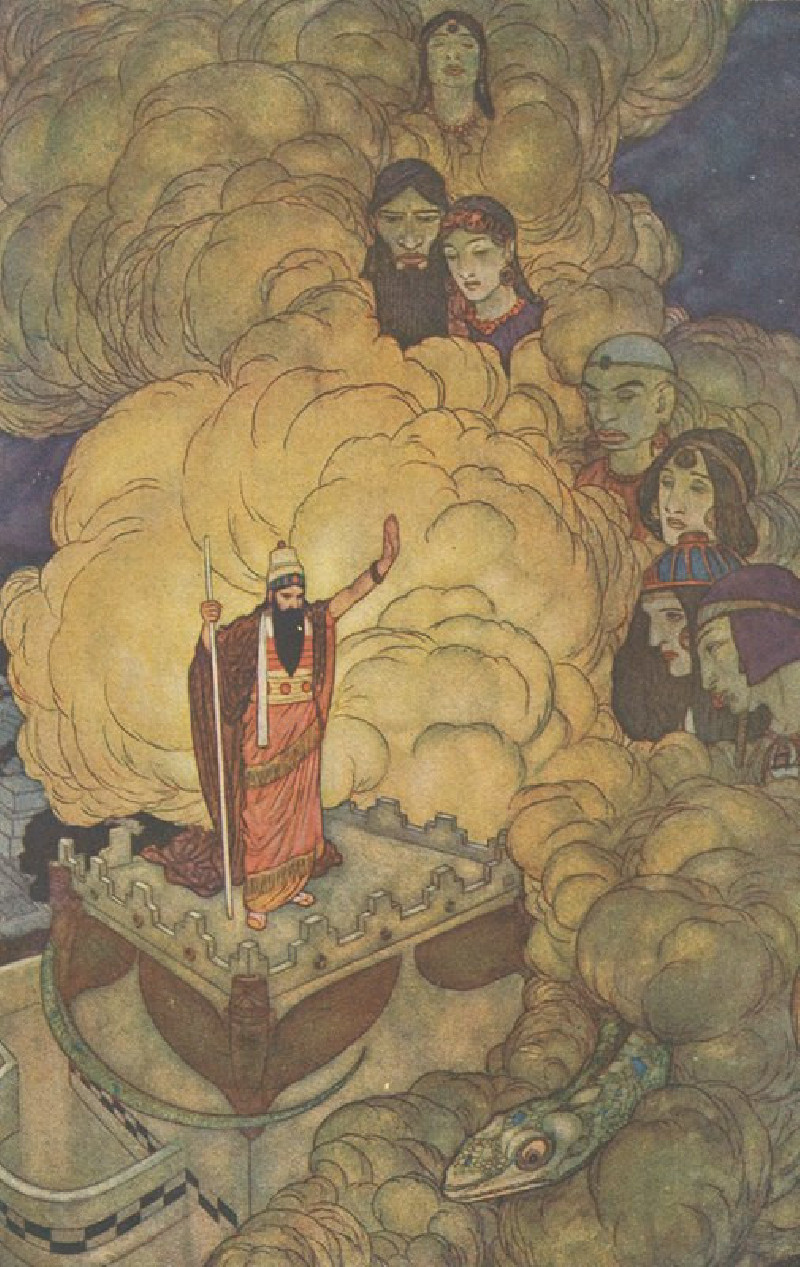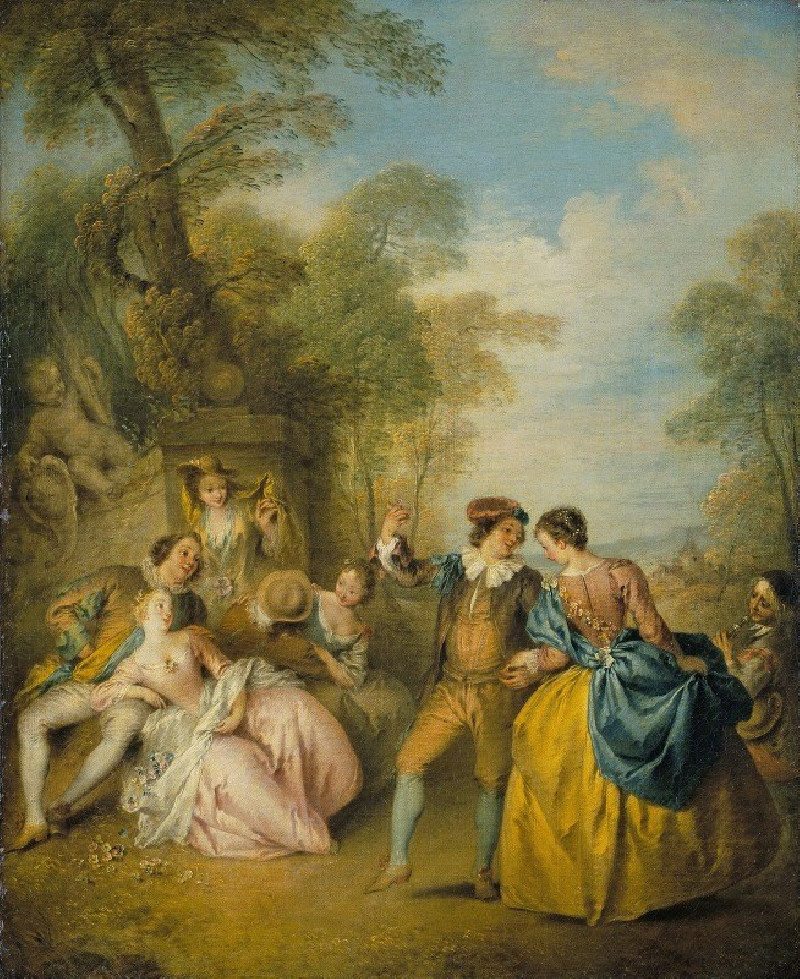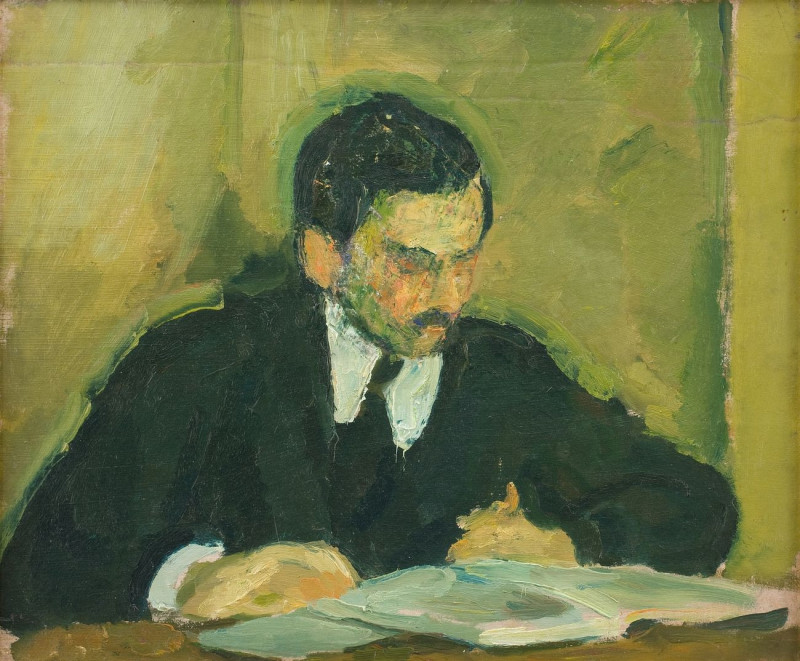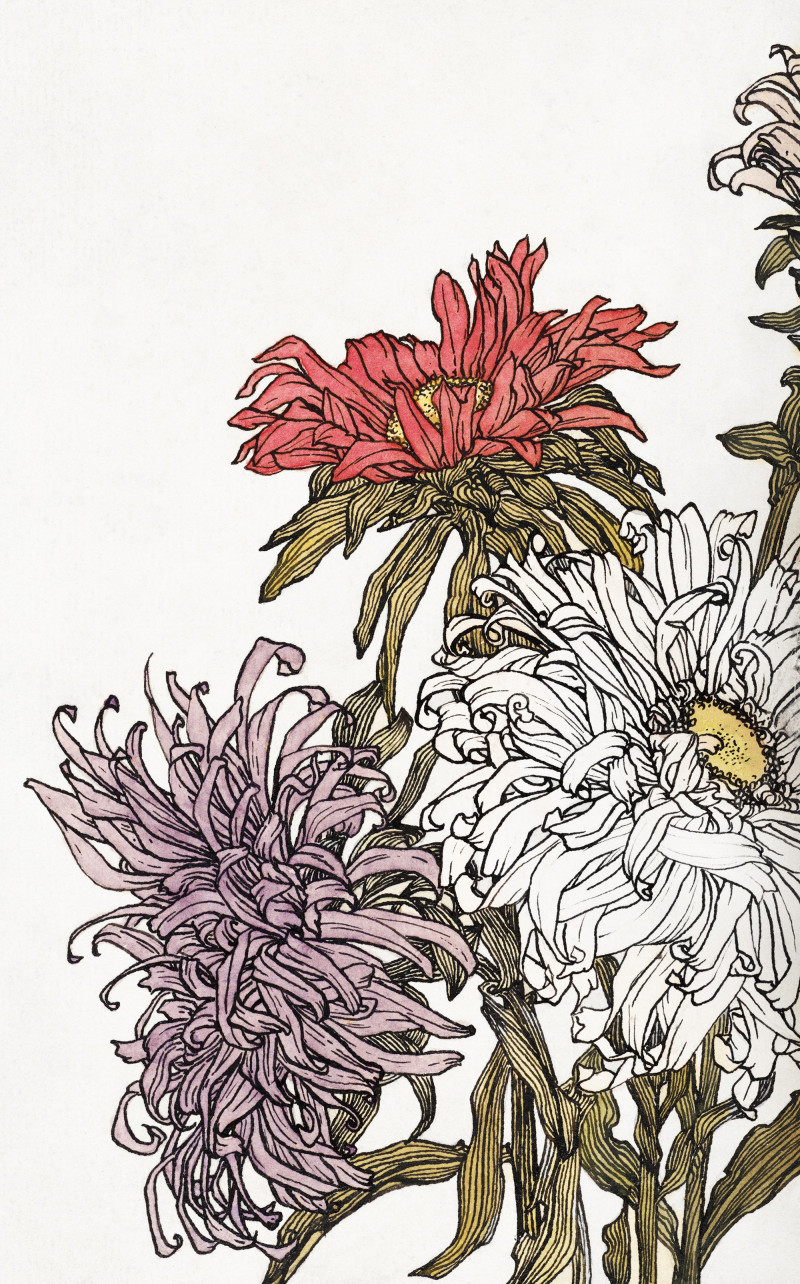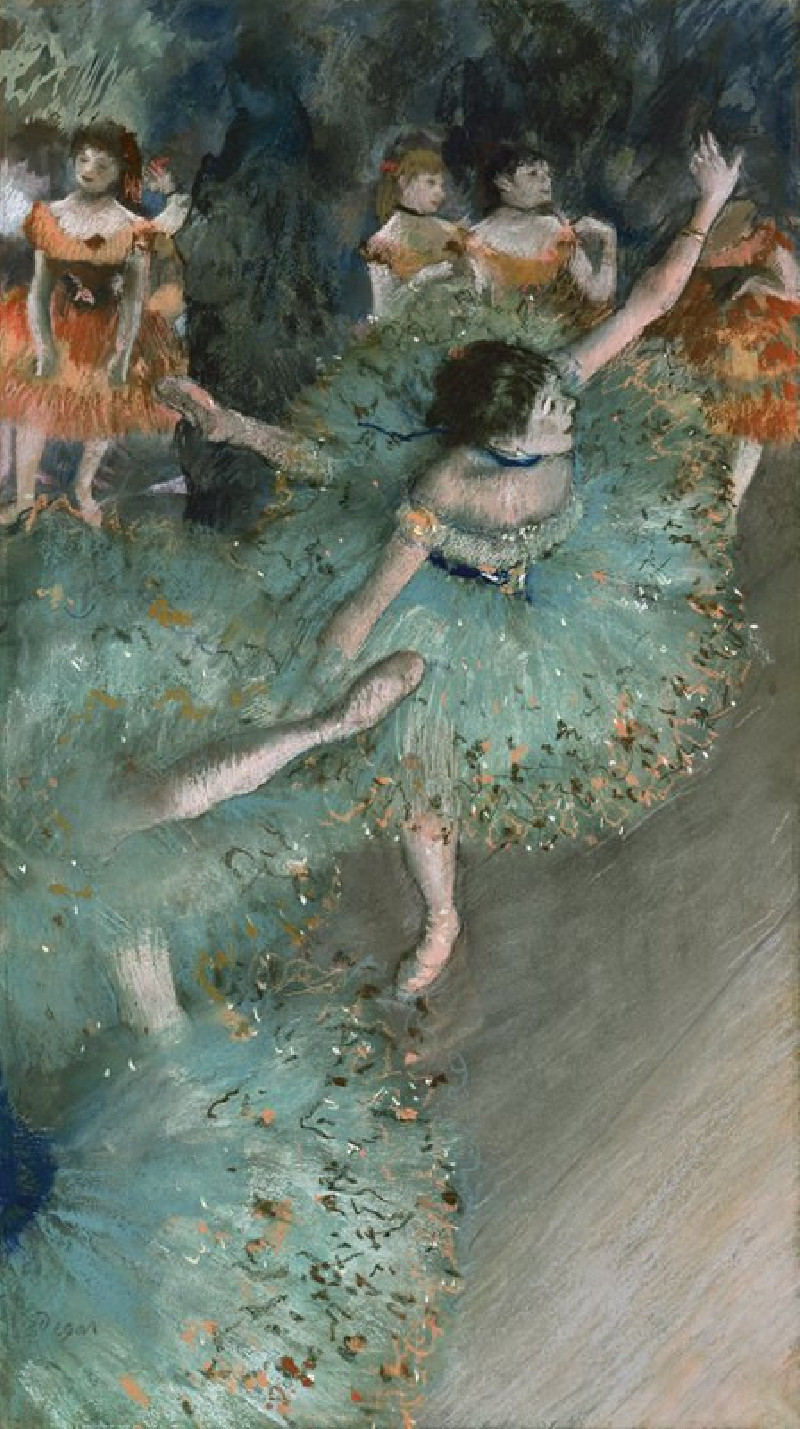Rosa Tomentosa (1817 - 1824)
Technique: Giclée quality print
Recommended by our customers
More about this artwork
Explore the delicate intricacies of "Rosa Tomentosa," a masterful botanical illustration by the renowned artist Pierre Joseph Redouté. This piece, crafted between 1817 and 1824, captures the subtle beauty of the Rosa Tomentosa, also known as the woolly rose, in exquisite detail.The artwork features a central image of the woolly rose in full bloom with its pristine white petals and a vibrant, rich yellow center. Surrounding the blossom are several buds in various stages of opening, suggesting the continuous cycle of life and growth inherent to nature. The depiction also includes an array of intricate green leaves and sharp, protective thorns that line the stem, highlighting the blend of beauty and resilience characteristic of wild roses.Redouté’s skill as a botanical illustrator shines through the lifelike representation of textures and colors in the plant, from the softness of the petals to the ruggedness of the stem. This piece not only serves as a visual delight but also as a scientific record, preserving the exquisite details of a species in its natural elegance.
Delivery
Returns
Pierre-Joseph Redouté, was a painter and botanist from Belgium, known for his watercolours of roses, lilies and other flowers at Malmaison, many of which were published as large, color stipple engravings. He was nicknamed "the Raphael of flowers" and has been called the greatest botanical illustrator of all time.

